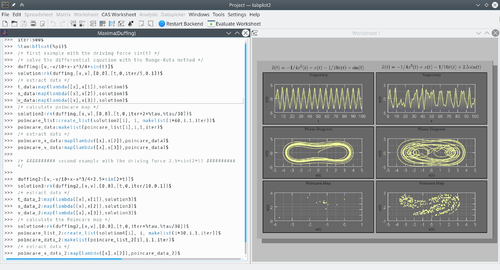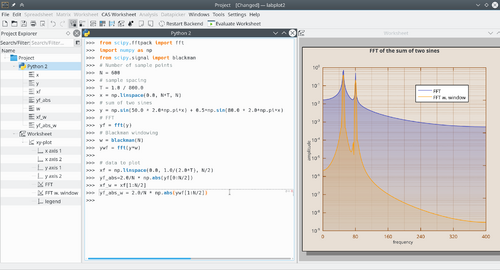LabPlot/CASComputing
CAS Computing
LabPlot can be used as a frontend to different open-source computer algebra systems (CAS) like Maxima, Octave, R, Scilab, and Sage, or programming languages providing similar capabilities like Python and Julia. LabPlot recognizes different CAS variables holding array-like data and allows selecting them as the source for curves. Instead of providing spreadsheet columns as the source for x- and y-data, the user provides the names of the corresponding CAS variables. Currently supported CAS data containers are:
- Maxima lists
- Python lists, tuples, and NumPy arrays
- Julia vectors and tuples
With this, powerful calculations carried out inside of different CAS environments can be combined with the user-friendly visualisation and editing capabilities of LabPlot. This combination is demonstrated below with the help of two examples:


